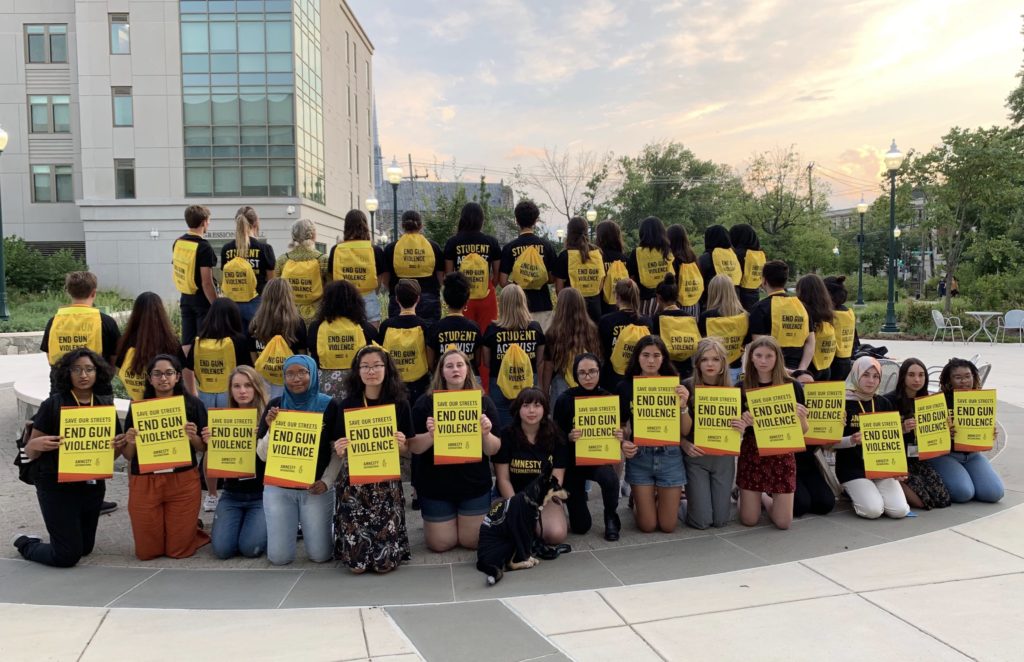Stop the gun violence pandemic
CONGRESS MUST FUND COMMUNITY-BASED GUN VIOLENCE PREVENTION

Break the Cycle: Addressing Today’s Gun Violence Watch our last conversation in this series on gun violence in communities of color in Washington, DC, and the importance of community-based organizations doing work in these communities.
COVID-19 is exacerbating the homegrown public health crisis that is gun violence in the U.S. Communities that already feel the impact of gun violence the most are being affected disproportionately by the pandemic, and the organizations designed to stop gun violence before it happens are critically endangered at a time when they are needed most.
Demand Congress commit at least $150 million annually for 10 years to community gun violence prevention programs and a national strategy to address the disproportionate impact on communities of color by passing the Break the Cycle Act and other appropriations, including stimulus bills.

TAKE ACTION
- Learn more about the Break the Cycle of Violence Act
- Sign the petition to your Senators and Representative to pass the Break the Cycle of Violence Act
- Call your representative’s office about the bill
- Write a letter to your members of Congress
- Click to Tweet your representative and senators about the bill
- Schedule a virtual visit with your representative and senators on the Break the Cycle of Violence Act
- Write a letter to the editor or Op-Ed for your local paper about the bill
- Text RIGHTSNOW to 21333 and join us in the fight for basic human rights.
CHANGE IS POSSIBLE
There are two ways that the U.S. government could provide immediate and long-term relief for these critical organizations.
1
2
1
Include funds for local prevention and intervention programs in the next rounds of emergency funding bills;
2
Pass the Break the Cycle of Violence Act which would provide five-year renewable federal grants to communities that need more resources to address gun violence.
LEARN MORE
Community-level firearm violence in the U.S. disproportionately impacts communities of color. The causes are multi-faceted and can be informed by deep-seated issues around poverty and systemic discrimination. But research indicates that long-term, adequately-funded, evidence-based projects tailored towards specific local contexts, led by or working in partnership with the affected communities, can achieve sustained reductions in firearm violence.
Even in normal times, these programs suffer from a lack of sustained funding and political will. But the situation is even more dire in the wake of COVID-19: local organizations are strapped for resources at a time when they are not only combatting gun violence, but also acting as first responders and conveyors of information and support for members of their communities.
These are four examples of types of community-based violence intervention programs that have been successful around the country:
Works with community members, local officials, law enforcement and direct service providers to identify a small group of individuals most at risk of being involved in gun violence. They are invited to in-person meetings where specific benefits and direct services are offered in return for agreeing not to engage further in gun-related activity.
Uses a public health framework to assess gun violence – treating gun violence like an epidemic – by focusing on the way violence is spread from person to person and interrupting cycles of violence proactively, including offering rehabilitation opportunities.
Based on the premise that patients admitted to the hospital for gunshot wounds – particularly those who are repeat admissions – may be at high risk of being victims or perpetrators of future gun violence and are likely to be open to modifying their behaviors. With adequate support, connection to direct services, and counseling, these patients leave the hospital with a tailored plan for alternatives to gun violence.
Created the Office of Neighborhood Safety, which is independent from the police department, but works collaboratively with the police in the initial phases of identifying high risk individuals for targeted outreach and support. Participants are offered the opportunity to enroll in a program known as Operation Peacemaker, which provides a comprehensive plan for connection with social services, treatment, counseling, educational and professional development training and financial incentives.
ADDITIONAL RESOURCES
- Quick Read: What Are Community-Based Violence Intervention Programs?
- Fact Sheet: Underlying Causes and Contributing Factors of Community-Level Gun Violence
- Quick Read: Top Ten Ways COVID-19 Intersects with Gun Violence
- Fact Sheet: A Human Rights Framework for Gun Violence
- Full Report: In the Line of Fire – Human Rights and the US Gun Violence Crisis
